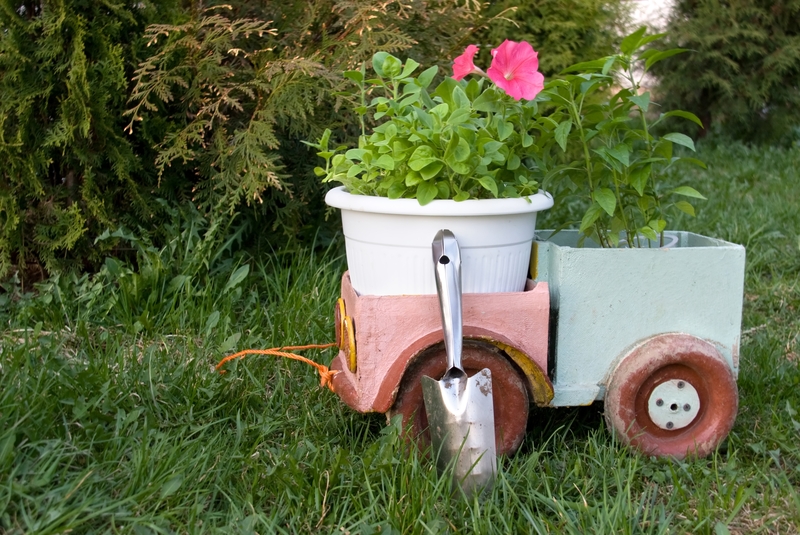Safeguarding Wildlife Through Proper PPE Waste Disposal
In recent years, the global surge in Personal Protective Equipment (PPE) use has brought about an unintended but severe threat to wildlife. Masks, gloves, face shields, and other single-use PPE items ensure human safety but too often end up as litter in our environment. Proper PPE waste disposal is essential not only for public health but also for the protection of biodiversity. This article explores the impact of improper PPE waste management, the risks to wildlife, and effective solutions for environmentally responsible PPE disposal.
Understanding PPE and Its Environmental Impact
Personal Protective Equipment encompasses a range of items--from surgical masks to nitrile gloves--that help minimize exposure to hazards. The COVID-19 pandemic led to an unprecedented rise in their manufacture and use. Unfortunately, most PPE is non-biodegradable, mainly composed of plastics such as polypropylene and latex.
- Face masks: Often made from layered plastics, designed for single use.
- Disposable gloves: Crafted from latex, nitrile, or vinyl.
- Face shields and other barriers: Often polycarbonate or PET plastic.
The environmental impact of PPE is substantial. Studies suggest that millions of masks and gloves are discarded every day globally. A significant portion finds its way into natural ecosystems--urban parks, rivers, beaches, and forests--posing grave risks to wildlife.
How Improper PPE Disposal Endangers Wildlife
When not correctly discarded, PPE items enter the environment and create several hazards for animals:
- Entanglement: Animals, especially birds, turtles, and small mammals, may get trapped in mask loops or plastic strips. This can cause injury, restricted movement, or even death.
- Ingestion: Mistaking PPE for food, many species ingest plastic masks or gloves, causing intestinal blockages or poisoning.
- Habitat Pollution: The accumulation of non-biodegradable PPE disrupts ecosystems and food chains, pollutes soil and waterways, and affects plant and animal health.
- Microplastic Generation: Over time, PPE breaks down into microplastics, which infiltrate the food web and threaten entire ecosystems from insects to apex predators.

The Scale of the PPE Pollution Crisis
In 2020 alone, it's estimated that over 1.6 billion disposable masks entered the world's oceans. Coastal clean-ups around the globe consistently report PPE as one of the most frequently collected types of litter. Wildlife rescue centers have reported a spike in injuries directly linked to PPE, such as beaks snared in mask loops or marine animals found with gloves in their stomachs.
Global statistics point to a dire need for action. According to conservationists, without intervention, our growing PPE consumption will have permanent, devastating effects on wildlife and biodiversity.
Best Practices for PPE Waste Disposal: Protecting Wildlife
Key Steps for Responsible PPE Disposal
- Cut ear loops and straps before disposal. This simple step can prevent wildlife entanglement.
- Dispose of PPE in designated waste bins. Never litter masks, gloves, or face shields in nature or public spaces.
- Use sealed bags for PPE disposal. Placing used items in sealed bags prevents them from blowing away or being scavenged by animals.
- Follow local guidelines for medical waste. Some regions require PPE to be treated as hazardous waste; always adhere to local protocols.
- Educate others. Spread awareness about the importance of eco-friendly PPE waste management.
Community Initiatives for PPE Clean-Up
Organized community clean-up days, educational workshops, and citizen science monitoring are proven ways to decrease PPE litter. Volunteer groups have removed tons of discarded masks and gloves from beaches and city streets, reducing the danger to local wildlife.
- Participate in local clean-ups. Look for events focused on PPE and plastic pollution.
- Report PPE litter hotspots. Notify authorities about areas with frequent PPE dumping.
- Support wildlife organizations. Donations and volunteerism help rehabilitation centers treat animals affected by PPE waste.
Innovative Solutions: Rethinking PPE for Wildlife Safety
Eco-Friendly PPE Alternatives
The development of sustainable PPE is an essential step forward. Research teams and companies have introduced products made from biodegradable materials, such as plant-based polymers or paper, which reduce the burden on the environment.
- Compostable face masks made from natural fibers
- Reusable cloth masks (where medically appropriate)
- Recyclable plastic shields
Switching to green alternatives can help limit the negative impact of PPE on wildlife, provided these items are also properly disposed of. Ultimately, a combination of sustainable design and public awareness of PPE waste management is needed.
Technology and Policy: Toward a Systematic Approach
Policymakers, health organizations, and environmental groups must collaborate to ensure safe PPE disposal. Some of the most promising strategies include:
- Clear regulations on PPE waste disposal at public sites, workplaces, and healthcare facilities
- Enhanced infrastructure for PPE collection and processing
- Investment in recycling technologies for PPE materials
- Policies mandating eco-friendly PPE wherever possible
Smart bins with sensors, mobile apps for disposal information, and expanded recycling programs are examples of how technology can boost compliance and minimize environmental risks.
How You Can Help Wildlife: Individual Actions Matter
Each person's choices contribute to the solution. Here are practical steps everyone can take to protect wildlife from PPE pollution:
- Plan ahead: Carry a small bag for used PPE when outside, and never discard items where wildlife may access them.
- Advocate: Encourage your local community or workplace to adopt rigorous PPE waste disposal protocols.
- Choose wisely: Where possible, opt for biodegradable or reusable PPE to lessen your environmental footprint.
- Stay informed: Follow updates on local regulations and ecological guidelines.
- Lead by example: Model proper PPE disposal to friends, family, and colleagues.
Children and Schools: Educating the Next Generation
Ensuring children understand the links between PPE disposal, pollution, and wildlife conservation is vital. Schools can incorporate lessons on sustainability, organize PPE recycling drives, and challenge students to develop creative solutions for keeping wildlife safe.

The Broader Benefits of Responsible PPE Waste Management
Protecting wildlife through proper PPE waste disposal also:
- Reduces toxic microplastics in the environment
- Prevents the spread of disease from contaminated PPE
- Supports healthier ecosystems, which in turn benefit human communities
- Enhances community pride and engagement in environmental stewardship
Proper PPE disposal is a simple but powerful way to make a difference in biodiversity conservation.
Case Studies: Real-Life Impacts of PPE Litter
Consider the Atlantic puffins reported in the UK, which were found entangled in disposable mask loops. In parts of Asia, fishermen have caught fish with fragments of gloves in their stomachs. These examples demonstrate the urgent need for collective action and personal responsibility regarding PPE waste.
Key Takeaways for Wildlife Safety
- Always dispose of PPE responsibly. Use proper bins, seal used masks and gloves, and cut loops before discarding.
- Advocate for better PPE waste management systems. Support local and global initiatives to improve collection and recycling.
- Stay informed on sustainable options. Choose reusable, recyclable, or biodegradable PPE whenever possible.
- Raise awareness for wildlife protection. Share knowledge with your community to promote wider participation in safe PPE waste disposal.
Conclusion: Our Role in Safeguarding Wildlife
The explosion in PPE waste since 2020 has created a concerning new challenge for wildlife protection. By learning how to manage and dispose of our protective equipment with care, choosing greener products, and demanding better waste management from authorities, we can minimize our impact on the environment.
Environmental stewardship is everyone's responsibility. Small acts--like cutting mask straps and disposing of PPE thoughtfully--play a critical role in keeping our wild neighbors safe. Working together, we can ensure that the legacy of the pandemic is not one of plastic pollution and wildlife suffering, but rather of resilience, care, and respect for the natural world.
Safeguarding wildlife through proper PPE waste disposal is not just an environmental issue; it is a call to conscience and collective action. Make your choices count--for the health of the planet and all its creatures.
